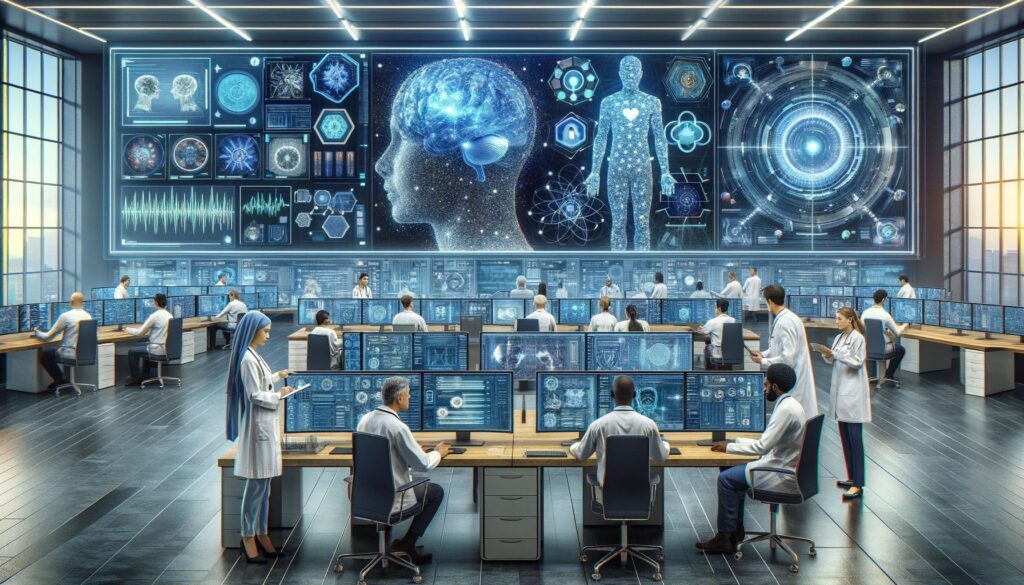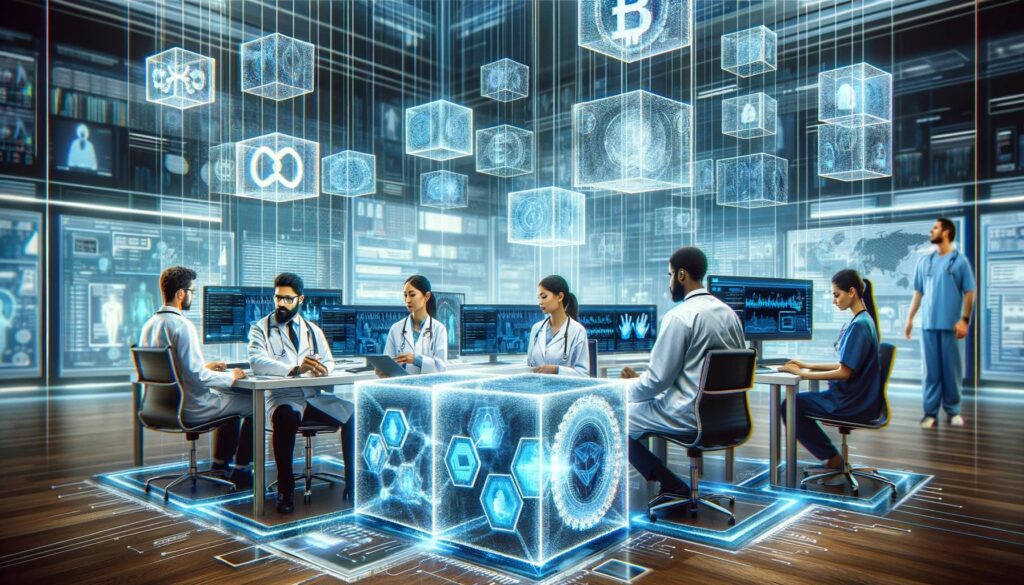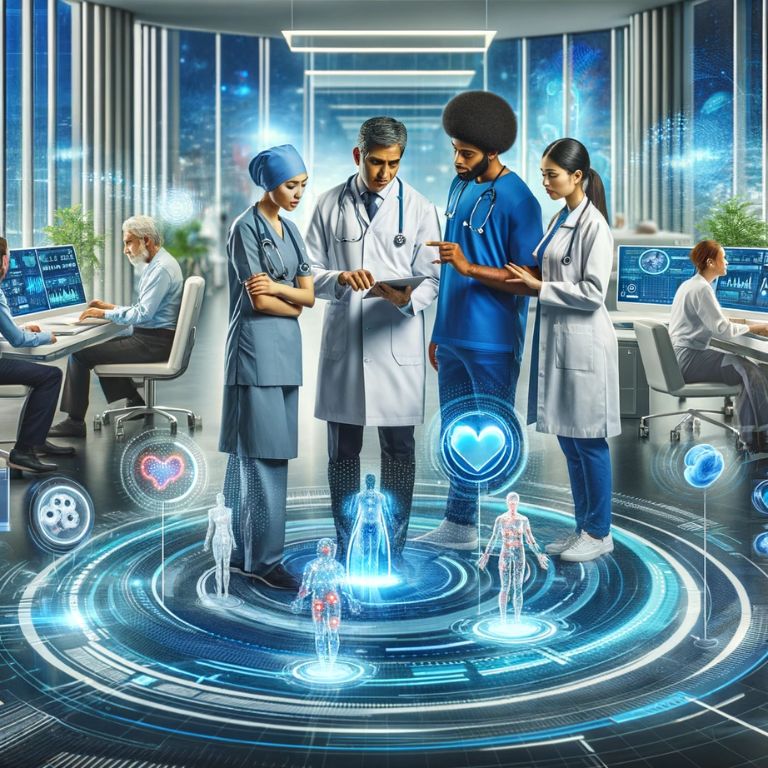Introduction to Healthcare Software Development
The healthcare industry, at the intersection of medicine and technology, is undergoing a profound transformation. The catalyst for this change is software development, a field that has become indispensable in modern healthcare. This shift is driven by the need to enhance patient care, streamline healthcare operations, and cope with the ever-growing complexities of medical data and patient management.
The Evolution of Healthcare Software
Healthcare software development has evolved from basic management systems to sophisticated platforms that manage every aspect of healthcare delivery. These systems range from patient records and data analytics to telemedicine and wearable technology integration. This evolution is not just about digitizing existing processes; it’s about reimagining healthcare delivery in the digital age.
Impact on Patient Care and Healthcare Operations
Software development in healthcare has a profound impact on patient care. It allows for more accurate diagnostics, personalized treatment plans, and enhanced patient monitoring. For healthcare providers, this translates into streamlined operations, reduced administrative burdens, and better resource allocation. The ultimate goal is to make healthcare more effective, efficient, and patient-centric.
The Role of Emerging Technologies
Emerging technologies like AI, blockchain, and IoT are reshaping the landscape of healthcare software development. AI and machine learning offer unprecedented capabilities in diagnosing diseases and predicting patient outcomes. Blockchain technology promises enhanced security and transparency in medical records management. Meanwhile, IoT is connecting various medical devices to create a cohesive, real-time monitoring system for patients.
The Need for Compliance and Security
With the increasing reliance on software solutions, healthcare providers face the challenge of ensuring data security and regulatory compliance. Patient data is sensitive and requires robust protection measures against breaches and unauthorized access. Compliance with regulations like HIPAA in the U.S. and GDPR in Europe is critical for maintaining trust and ensuring legal adherence.
Continuous Integration and Continuous Delivery (CI/CD) in Healthcare
The integration of Continuous Integration (CI) and Continuous Delivery (CD) practices in healthcare software development marks a significant step towards enhanced efficiency and reliability in healthcare IT solutions.
What is CI/CD?
CI/CD refers to the methods of frequently integrating code changes into a shared repository (Continuous Integration) and automatically releasing these changes into production (Continuous Delivery). This practice is crucial in healthcare, where software updates need to be deployed swiftly and flawlessly.
Benefits of CI/CD in Healthcare Software Development
- Enhanced Reliability: CI/CD automates code testing, significantly lowering error rates during deployment, crucial for patient safety in healthcare.
- Rapid Deployment: It enables quick software updates, essential for healthcare providers to adapt swiftly without operational disruption.
- Improved Security: Automated deployments minimize human error risks, ensuring sensitive healthcare data remains confidential.
- Agility in Response to Changing Needs: CI/CD allows for fast software adjustments in response to evolving healthcare demands.
MLOps: Transforming Healthcare with Machine Learning

Machine Learning Operations (MLOps) is increasingly gaining traction in the healthcare sector, offering a systematic approach to deploying and maintaining machine learning models in production reliably and efficiently.
Explaining MLOps
MLOps is a set of practices that combines Machine Learning, DevOps, and Data Engineering, aiming to deploy and maintain ML models in production reliably and efficiently. It involves the lifecycle management of ML models, from development and testing to deployment and monitoring.
Benefits of MLOps in Healthcare
- Streamlined Development and Deployment: MLOps enables the smooth transition of ML models from the experimental phase to practical, real-world applications in healthcare, enhancing the speed and efficiency of deploying new models.
- Enhanced Model Security and Compliance: With the sensitive nature of healthcare data, MLOps emphasizes security and compliance, ensuring that ML models adhere to regulatory standards such as HIPAA.
- Agility and Adaptability: MLOps provides healthcare organizations with the flexibility to quickly adapt ML models in response to new data, research findings, or healthcare regulations.
- Collaboration Across Teams: It fosters collaboration between data scientists, ML engineers, and IT professionals, ensuring that ML models are integrated seamlessly into healthcare systems.
Low Code Platforms in Healthcare Software Development
Low code development platforms are revolutionizing the way healthcare software is developed, making the process faster, more efficient, and accessible to a broader range of people.
Defining Low Code Development
Low code development platforms allow for the creation and customization of software applications using graphical user interfaces and configuration instead of traditional hand-coded computer programming. These platforms enable developers and even non-technical users to build applications through visual modeling tools.
Benefits of Low Code in Healthcare
- Rapid Development and Deployment: Low code platforms significantly reduce the time required to develop and deploy applications, enabling healthcare organizations to quickly adapt to changing needs.
- Reduced Need for Specialized Skills: By simplifying the development process, low code platforms lower the barrier to entry, allowing healthcare professionals with minimal coding expertise to contribute to software development.
- Enhanced Collaboration: These platforms foster collaboration between IT and non-IT staff, bridging the gap between developers and healthcare professionals to ensure the end product aligns with user needs.
- Flexibility and Customization: Healthcare organizations can use low code platforms to tailor applications to their specific requirements, improving the overall functionality and user experience.
Integrating Wearables and IoT in Healthcare
The integration of wearable technology and the Internet of Things (IoT) in healthcare is transforming how patient data is collected and analyzed, leading to more personalized and proactive care.
The Convergence of Wearables and IoT in Healthcare:
Wearable devices, such as fitness trackers, smartwatches, and health monitors, are increasingly being integrated with IoT technology. This integration allows for continuous, real-time monitoring of patients’ health, providing valuable data for both patients and healthcare providers.
Benefits of Wearables and IoT in Healthcare:
- Enhanced Patient Monitoring: Wearables provide continuous health monitoring, enabling early detection of potential health issues. For patients with chronic conditions, this can mean more timely interventions and better management of their health.
- Personalized Patient Care: Data from wearables can be used to tailor treatment plans to individual patient needs, enhancing the effectiveness of healthcare interventions.
- Improved Data Collection and Analysis: IoT devices collect a vast amount of health data which can be analyzed for insights into patient health trends, disease patterns, and treatment outcomes.
- Increased Patient Engagement: By providing patients with data about their own health, wearables and IoT devices can encourage more active participation in their healthcare.
Blockchain Technology in Healthcare

Blockchain technology is emerging as a transformative force in healthcare software development, offering a secure and efficient way to handle sensitive medical data.
Introduction to Blockchain in Healthcare
Blockchain technology, at its core, is a decentralized ledger system that provides a secure and transparent way to record transactions. In healthcare, it can be used to manage patient data, handle prescriptions, and ensure the integrity and security of medical records.
Benefits of Blockchain in Healthcare
Enhanced Data Security: Blockchain’s decentralized nature makes it extremely secure against tampering and cyber threats, which is critical for protecting sensitive patient data.
Improved Data Sharing and Interoperability: It facilitates the secure sharing of patient data across different healthcare systems and providers, enhancing collaboration and patient care continuity.
Increased Transparency and Trust: Every transaction on a blockchain is recorded and traceable, increasing transparency in medical recordkeeping and fostering trust among patients and providers.
Streamlined Administrative Processes: Blockchain can automate and streamline administrative tasks such as billing and claims processing, reducing errors and operational costs.
Artificial Intelligence and Its Role in Healthcare
In the dynamic world of healthcare, Artificial Intelligence (AI) has emerged as a key driver of innovation, reshaping various aspects of patient care, diagnostics, and medical administration.
Transforming Diagnostics and Treatment
AI in healthcare is revolutionizing diagnostics and treatment, offering precise disease detection and aiding in creating effective treatment plans.
Enhancing Patient Care
AI tools support personalized patient care, using historical and current health data to improve outcomes.
Operational Efficiency through AI
AI streamlines healthcare operations, automating routine tasks and allowing medical staff to focus more on patient care.
AI in Drug Development
AI is accelerating drug discovery and clinical research, reducing time and costs in bringing new treatments to the market.
Navigating AI Implementation Challenges
Implementing AI involves addressing data privacy, the need for extensive datasets, and maintaining ethical AI algorithms.
AI Applications in Current Healthcare Scenarios
AI is currently used for a range of applications, including virtual health assistants and AI-powered diagnostic tools, enhancing accuracy and speed in medical processes.
The Internet of Medical Things (IoMT) in Healthcare
The Internet of Medical Things (IoMT) is rapidly becoming a pivotal component in healthcare, offering innovative ways to manage patient health and streamline medical services.
Understanding IoMT
IoMT refers to the interconnected system of medical devices, software applications, and health systems and services. It encompasses a wide range of devices like wearable fitness trackers, remote monitoring tools, and integrated medical devices, all connected through the internet.
Advantages of IoMT in Healthcare
- Real-Time Monitoring: IoMT devices provide continuous health monitoring, crucial for patients with chronic conditions. They offer real-time data tracking, alerting healthcare providers to potential health issues as they arise.
- Data-Driven Insights: The data collected by IoMT devices contribute to a vast pool of health information. This data can be analyzed to gain insights into patient health trends, inform clinical decisions, and improve healthcare outcomes.
- Improved Patient Engagement: IoMT empowers patients by giving them access to their own health data. This involvement can lead to better health awareness and proactive management of their conditions.
- Operational Efficiency: IoMT streamlines various healthcare operations, reducing the need for manual interventions and helping in efficient resource management.
Challenges in Implementing IoMT
Implementing IoMT in healthcare comes with challenges like ensuring the security and privacy of health data, integrating with existing healthcare systems, and managing the vast amount of data generated by these devices.
Conclusion
The healthcare industry is witnessing a significant digital transformation, shaped by the integration of advanced technologies like AI, Blockchain, and the Internet of Medical Things. These innovations are streamlining processes, enhancing patient care, and introducing new efficiencies. From the agility of CI/CD and serverless architecture to the democratizing influence of low-code platforms, software development in healthcare is becoming more responsive and aligned with patient needs. The future is geared towards an even more connected and personalized healthcare experience, underscoring the vital role of technology in shaping health outcomes. As this digital revolution unfolds, it heralds a new era of healthcare that is more efficient, effective, and patient-centered.




